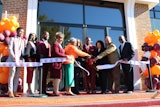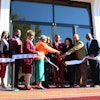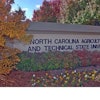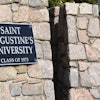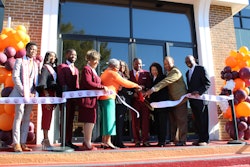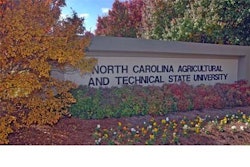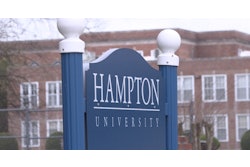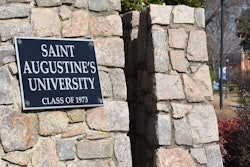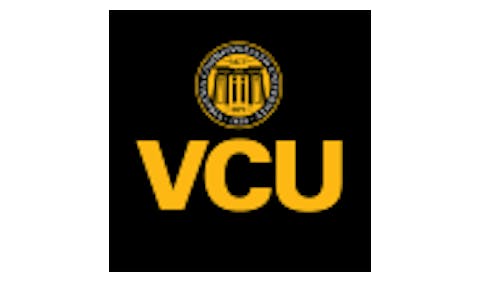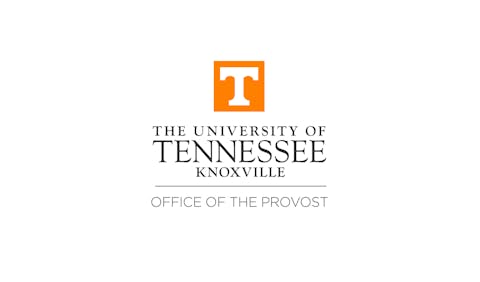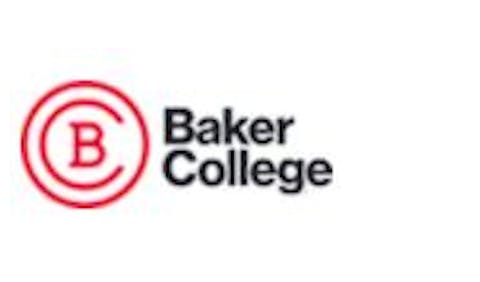 Ed Smith-Lewis
Ed Smith-Lewis
DIVERSE: Can you talk about the history of the Institute for Capacity Building and how the UNITE convening came about?
SMITH-LEWIS: The Institute for Capacity Building, or ICB as we affectionately call it, was established with the bold and necessary vision to move HBCUs beyond the survival mindset to one of strategic growth, transformation, and ultimately long-term sustainability. For generations, HBCUs have been creating opportunities despite systemic underfunding and external pressures. UNCF recognized that these institutions need more than just emergency support or short-term grants. They needed long-term, data-driven, institutionally customized strategies to build financial resilience, promote academic innovation, and drive student success models that work for their institutions.
Under the guidance and visionary leadership of our current President and CEO, Dr. Michael Lomax, ICB officially launched in 2006. The work is much deeper than that, and we'll be celebrating our 20th anniversary next year. It was an idea ahead of its time – at the time of its launch, very few funders, organizations, or institutions were talking about capacity building.
One of our most defining initiatives started in 2016: the Career Pathways Initiative (CPI), a $50 million investment by the Lilly Endowment. CPI wasn't just about connecting students to jobs; it was about reimagining how career readiness is embedded into the entire academic experience at HBCUs. That initiative provided 23 HBCUs and a PBI [Predominantly Black Institution] with data-driven strategies to align academic programs with workforce needs to ensure students didn't just graduate with degrees, but with the skills, experiences, and networks to launch meaningful careers.
From CPI and our broader institutional support work, UNITE was born. Originally designed as an annual conference for CPI institutions, UNITE quickly evolved into the premier space for HBCUs to gather, collaborate, and push the boundaries of what's possible. The first few convenings focused on career readiness and the Career Pathways Initiative, but we quickly realized the need for a bigger tent – a space where HBCUs can engage on issues of leadership, financial health, academic transformation, student success, and institutional collaboration.
Today, UNITE is the largest and most action-oriented convening focused on HBCU institutional transformation. It brings together presidents, provosts, faculty, funders, policymakers, and industry leaders to address big questions facing HBCUs. At the end of the day, UNITE isn't just a conference; it's a movement. It's about equipping institutions with the tools to drive change on their campuses, fostering cross-campus collaboration, and ensuring that HBCUs are setting an agenda for higher education innovation, not just responding to it.
DIVERSE: In addition to policymakers, faculty, and administrators, students play a major role in UNITE. Could you talk about the intentionality behind including students as part of this process?
SMITH-LEWIS: We actually just launched a body of work with ICB called Learner Voice, where we're focused on how to engage students on the ground in driving meaningful transformation on campus. Through support from the Macquarie Group Foundation, we've been investing in student-led activities to drive student success improvement. We're working with five institutions in that pilot program.
In the last few years, we've had somewhere between 2-3% of students attending. It's a small number of students, but they are mighty! We work with them directly, partnering with our National Alumni Council. We bring those students in and work with them before they get to the conference. We want to understand what their beliefs are about higher ed transformation, their institution, and what they believe senior leaders and faculty members on their campus should understand. Those students come in actively prepared to participate.
This is not a "come and hang out in the hallways" kind of convening – it's a "come, roll up your sleeves, engage with colleagues and other partners, and do the hard work of HBCU change." Students are no different. You can't really do HBCU transformation and improvement without students engaged in the conversation. So, while we've made progress, we still have more work to do to get many more student voices in the space.
DIVERSE: Can you talk about the five pillars of UNITE?
SMITH-LEWIS: The five pillars are a natural outflow of our work. They're more than just focus areas – they're our theory of change. They represent how we work with HBCUs to move from where they are to where we want them to be.
The first is institutional excellence. It's about building strong institutions with strong leadership, sustainable financial models, and effective governance. We work with institutions to build out their financial sustainability through strategic planning and resource diversification to ensure long-term impact.
Student success is the second pillar. Students are the reason why our institutions exist. HBCUs have a long history of transforming lives, but student success must be intentional. We're leveraging promising practices – and we say promising practices intentionally because everybody's "best practice" may not meet specific institutional needs. We focus on promising practices on internships, mentorships, industry partnerships, and how to think about a robust student experience.
The third pillar is economic mobility. We know that 90% of HBCUs move their students up income quartiles, but how can 100% be in the top 10% moving students up? How do we go from one income quartile to two? We're fundamentally thinking about wealth-building strategies and ensuring students get awareness of potential careers. Most importantly, we work to align academic programs to high-wage and high-impact industries.
Our fourth pillar is research and innovation. We're looking at the frontier – how can we continue to push the envelope of what's possible? How do we reimagine current operating models? How do we stand up things that we know in our gut, but maybe haven't been proven through research? It's about building the knowledge base and pushing the envelope of what it takes to be successful in the field.
The last pillar is systems change. The work we're doing cannot be done alone. Together, HBCUs lead in the production of graduates in STEM programs and those who go on to get terminal degrees. Together, HBCUs lead in economic possibility for the communities they're in. Our question on systems change is: How do we grow our togetherness? How do we get more institutions, partners, employers, and funders involved? How do we get policymakers aligned?
When you take those five pillars together, it ultimately lands on UNCF's networked approach to improving how our institutions operate to drive student success, economic mobility, and research and innovation.
DIVERSE: You've mentioned collaboration several times in this conversation. Can you talk about how UNITE is fostering this sense of innovation?
SMITH-LEWIS: At UNITE, innovation isn't just about chasing trends – it's about building solutions that work for HBCUs. Take HBCUv for example. When we set out to build that digital learning network, we weren't just thinking about online education. We were thinking about how to take the best of the HBCU experience – its culture, its community, its academic excellence – and translate that into a digital space. Or look at the work happening at Morehouse around the metaverse, where they are taking technology and uplifting the stories, theories, and practices of their institution in a virtual world.
When we think about innovation at UNITE, it's both about closing the gap with institutions through knowledge sharing and adoption of promising practices, but it's also about pushing the envelope, showing that we can do more and do something different. Innovation to us is collaboration.
As Dr. Roslyn Clark Artis, President of Benedict College always says, "Collaboration is the newest form of domination." Last year, we had more than 80 HBCUs and other mission-aligned institutions in our space – 80 HBCUs' senior leadership coming together to talk about what's possible. That's innovative in itself.
Collaboration isn't a nice-to-have at UNITE; it's the foundation of how HBCUs must move forward together. For too long, many of our institutions have expected to solve big challenges on their own, with limited resources and even more limited external support. But history tells us that HBCUs thrive when they work collectively. UNITE was built as a space where institutions don't just exchange ideas but build solutions together.
Take, for example, the shared data infrastructure work we've been doing for a long time – the foundations of data governance – where we're partnering with 10 HBCUs to align definitions of higher ed terms and how they're stored in data systems. This allows us to streamline practices for more scalable, more effective solutions.
HBCUs have always been innovating for generations. These institutions have been creating pathways to opportunity despite systemic barriers – that's innovation. They're educating first-generation college students and turning them into global leaders – that's innovation. At UNITE, our job is to showcase it, give them a platform to tell that story, and give a platform for others to adopt it. When we think about innovation, it's really about giving our institutions the opportunity to learn, share, and grow together.
DIVERSE: You've mentioned HBCUv. Can you tell us more about how that initiative has developed?
SMITH-LEWIS: HBCUv is one of the most ambitious digital learning initiatives in HBCU history – dare I say, all of history. It's not just about putting courses online; it's about building a network learning community where students from any HBCU can access high-quality courses, mentorship, and career opportunities in a seamless and engaging way. Think of it this way: if you're a student at Tuskegee and you want to take a specialized business analytics course from Howard, HBCUv makes that possible without transferring schools.
Today, we have a platform that students and faculty can log into, where they can engage, connect, and start groups. We have the first and only comprehensive consortium agreement between HBCUs – six institutions that have signed up to facilitate seamless course sharing among their institutions and to share data into a centralized repository because we're connected to their SIS system. The big innovation here is not only sharing our number one asset – curriculum – but also enabling the growth of a technological infrastructure that could be game-changing for HBCUs. We're connected to the information system of the institution, and gone are the days where you need to get forms signed in triplicate.
We launched our first course with Shaw University – the first HBCU in the South – which was also the first HBCU to deliver a course successfully on HBCUv. But then we had a snag. Like every other tech provider, we got ahead of our skis. We realized that we had the technology, capability, and infrastructure, but our institutions needed more curriculum development and engagement.
Right now, we're slowing down the build of the technology to increase capability and buy-in at the institutions. Technology that's only focused on adoption is not serving its clients the way it needs to. We're fundamentally focusing on engaging our faculty in course development, partnering with organizations like Lumen Learning and OLI from CMU to accelerate course development. While the infrastructure is there, we need to double down on building up the online content of HBCUs. In 2025, we'll see a more explicit focus on faculty engagement, picking up the student engagement onto the broader aspects of the platform in 2026.
This represents four years of real work – 3,500 hours of research and investigation, ethnography, surveys, campus visits, co-creation labs with our institutions. When I say we co-created this with the institutions, we truly did. Now we have an asset that could be fundamentally game-changing. When we think about the future of HBCUv, it's going to go well beyond course sharing. Anything that you can put into the cloud – why can't we share it together? HBCUv represents a path towards radical collaboration and strategic alliance.
DIVERSE: Why is Together We Lead your theme for UNITE 2025?
SMITH-LEWIS: To be honest, I wish we would have thought about it years ago. At the Institute for Capacity Building, we have always taken a networked approach to ensuring HBCUs not only survive but thrive. For us, together we lead isn’t just a slogan. It’s a reflection of how lasting change really happens—not in silos, not behind closed doors, but when leaders come together.
When HBCUs, and their partners, funders, thought leaders, champions, and students unite around a shared vision and shared responsibility, we can accomplish anything. The challenges we face are bigger than any one person or organization. And the progress we seek demands more—collective action. That’s the power of the UNITE community.
Across our ecosystem, we don’t just collaborate—we co-create. We ask hard questions, exchange bold ideas, and stretch what’s possible. We turn isolated efforts into collective breakthroughs that aren’t defined by your leadership position, but by anyone courageous enough to act and visionary enough to act together.
At UNITE we create a home for the courageous and the visionary. With every partner who shows up to build, support, and reimagine what’s possible—we’re not waiting for the future of higher education. We’re shaping it.
This interview has been edited for length and clarity. You can learn more about the UNITE conference here. Diverse: Issues In Higher Education is proud to serve as this year’s media sponsor.
